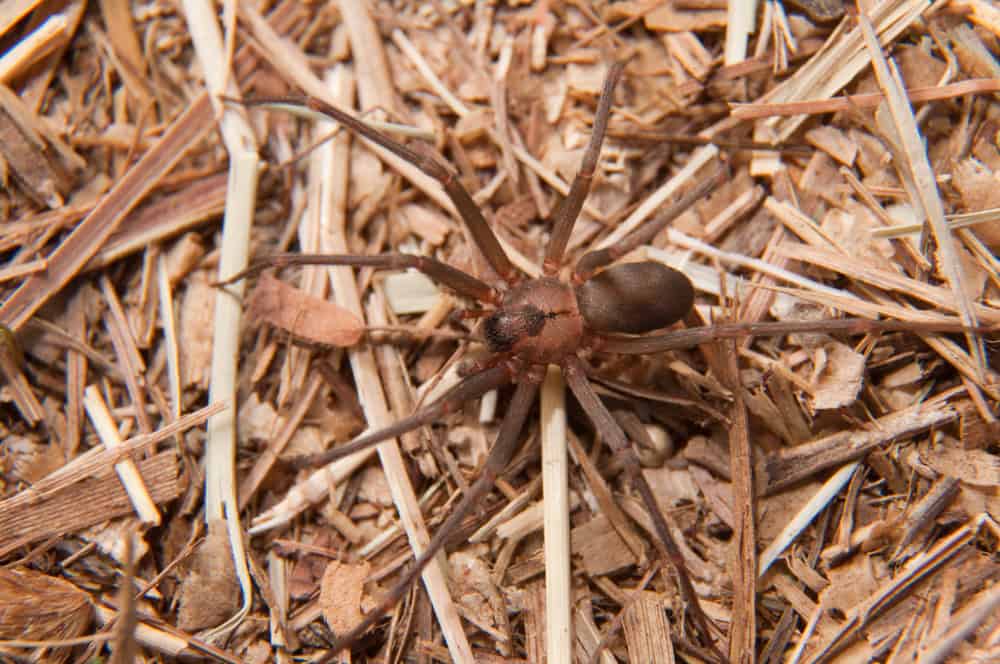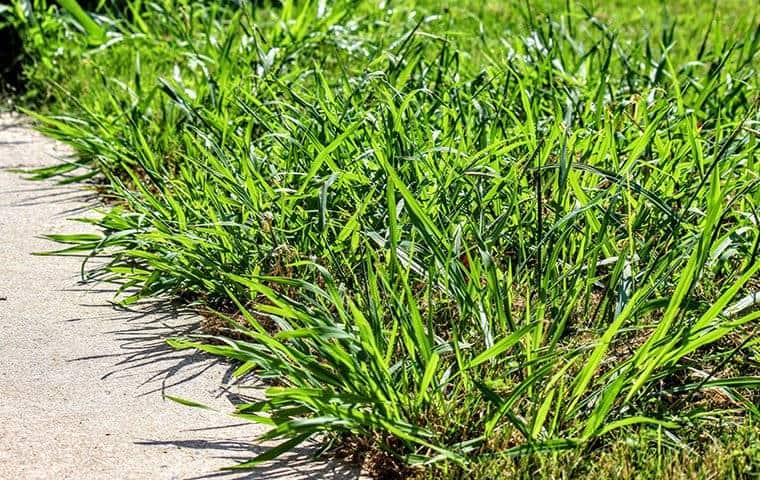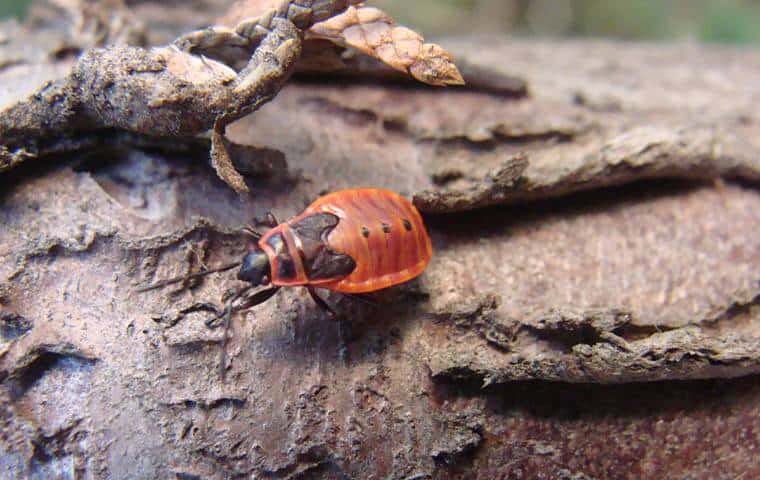In the diverse landscapes of North Texas, a fascinating world unfolds right beneath our feet—one populated by countless species of spiders, including the wolf spider. From the delicate web weavers gracing your garden to the stealthy hunters lurking in dark corners, these eight-legged creatures play essential roles in our environment. They help control insect populations and contribute to the health of local ecosystems. Yet, for many residents, the mere sight of a spider can trigger anxiety or fear. Understanding the types of species inhabit your surroundings can turn apprehension into appreciation.
Identifying common spiders in North Texas is not just about easing anxiety; it’s about safety too. While most spiders are benign and beneficial, a few venomous species, such as the black widow, can pose risks to humans and pets due to their venom. By learning how to recognize these arachnids, you empower yourself with knowledge that fosters safe cohabitation. In this handy guide, we will explore techniques for spotting both harmless and harmful spiders, offering valuable insights that will transform how you view these often-misunderstood creatures. So grab your curiosity and let’s dive deeper into the remarkable world of spiders in North Texas!
Common Non-Venomous Spiders In Texas
In North Texas, a variety of non-venomous spiders frequently make their homes right alongside us, providing valuable contributions to our local landscapes by preying on pests. Some of the most commonly encountered species include the common house spider (Parasteatoda tepidariorum), the barn spider (Araneus cavaticus), and the friendly cellar spider (Pholcus phalangioides). While these eight-legged residents might send a shiver down your spine when spotted in a corner or behind furniture, they are generally harmless and play an important role in controlling harmful insect populations around your home.
To identify these non-venomous spiders, look for key visual cues. The common house spider typically features a round body with light brown coloring and dark stripes on its cephalothorax. Barn spiders often display large, bulbous abdomens adorned with intricate patterns; sometimes you can spot them forming thick webs in outdoor areas. Cellar spiders, on the other hand, have long, spindly legs but small bodies—this flexible build allows them to weave fragile webs hidden away in undisturbed spaces like basements and attics. Familiarizing yourself with these physical traits will help you maintain composure when encountering them.
Aside from appearance, observing behavioral traits can also signal that you're dealing with a harmless spider, as some species don’t spin webs. For instance, many non-venomous species tend to retreat quickly rather than attack; if disturbed or threatened, you'll often see them scurry into their web or under nearby objects, which is typical behavior for common spider species. Additionally, most of these spiders are not aggressive—their primary concern is catching food rather than confronting humans. Should you find one hanging out in your living room or garage, remember that its presence is indicative of an established ecosystem working to reduce unwanted pests like cockroaches, ants, fleas, and more.
By understanding more about common non-venomous spiders in North Texas, you’ll not only foster awareness but also learn to appreciate their essential roles within our shared habitats. Embracing this knowledge encourages an environment where curiosity replaces fear and respect for all creatures continues to grow—even those as simple as spiders in North Texas.
Common House Spider
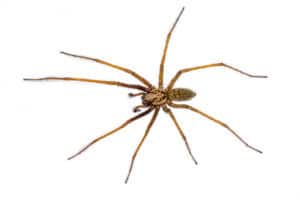
Physical Appearance
The physical appearance of the common house spider is both fascinating and functional, a perfect embodiment of evolution's artistry. Typically measuring between 1/4 to 1 inch in body length, they can easily be mistaken for their more venomous relatives due to their muted browns and grays. However, it’s not just their cerebral camouflage that holds intrigue; their eight legs are equipped with tiny hairs that function like sensors, allowing them to feel vibrations and navigate their environments with remarkable precision. With varying patterns on their abdomens—ranging from mottled shades reminiscent of tree bark—their design serves as a natural display of beauty and utility.
Moreover, each common house spider exhibits subtle differences which can tell a story about its habitat. For instance, those dwelling in darker corners often have lighter hues or less vibrant pigmentation compared to their counterparts found in sunlit nooks—a testament to nature's adaptive spirit. Their delicate but robust silk-spinning apparatus allows them not only to weave intricate webs that capture prey but also acts as an essential safety line against falls during pursuits or escapes. In this miniature ballet of life and survival across your very home, every strand spun speaks volumes about these oft-overlooked yet endlessly intriguing creatures living among us.
Habitat
The habitat of the common house spider reflects a remarkable adaptability that allows it to thrive in human environments. These spiders often choose hidden corners, cluttered spaces, and dark nooks where they can build their intricate webs undisturbed. Their preference for such locations often goes unnoticed, blending seamlessly into the backdrop of our daily lives, from basements and attics to forgotten cabinets. This tendency not only provides protection from predators but also positions them strategically to catch unsuspecting prey drawn in by household lights.
Interestingly, while these arachnids are primarily indoor dwellers, their presence signals a unique relationship with human habitats. The availability of food sources—like flies and other small insects that congregate around our living spaces—makes homes an ideal ecosystem for them. As house spiders contribute to natural pest control within home environments, they serve as an unassuming reminder of nature's resilience and adaptability amid urban development. Observing the simple yet profound way these creatures integrate into domestic life invites us to appreciate the delicate balance between our existence and theirs—a symbiotic dance unfolding right in our living rooms.
Is This Spider Dangerous?
When it comes to assessing the danger posed by common house spiders, it's essential to differentiate between myth and reality. Most house spiders are harmless, playing a vital role in controlling pests within our homes. While the sight of a spider can trigger fear or disgust, understanding their behavior and ecological benefits reveals that they are more allies than enemies. Many people mistakenly believe that any spider lurking in their home is venomous, which perpetuates unnecessary panic.
Moreover, observing a spider's web-building techniques can be quite fascinating; their intricate designs evolve based on their environment and available prey. For instance, the humble cobweb maker has adapted its work to optimize energy efficiency while maximizing capture success. Appreciating these little architects allows us to see them as unique beings rather than mere invaders of our space. So next time you spot a common house spider scuttling across your living room floor, consider taking a moment to admire its craftsmanship rather than reaching for the nearest shoe!
Wolf Spider
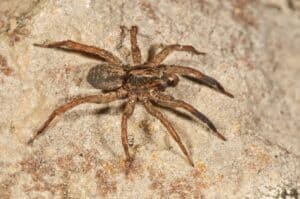
Physical Appearance
The Texas wolf spider’s physical appearance is striking, characterized by its robust body and long, hairy legs that lend it an air of ruggedness reminiscent of its predatory nature. Unlike many spiders that spin intricate webs, the wolf spider boasts a more versatile and agile physique designed for hunting on foot. Its coloration often varies between shades of brown and gray, allowing it to seamlessly blend into the forest floor or rocky terrains—a master of camouflage in the wild.
One particularly fascinating aspect of their appearance lies in their large, forward-facing eyes: eight in total but often grouped in such a manner that they provide excellent depth perception. This exceptional eyesight affords them a remarkable advantage when stalking prey at night. The arrangement also gives them an almost expressive face; they seem to convey curiosity or alertness as they scan their surroundings. Additionally, the distinctive patterns on their exoskeleton aren't merely for aesthetics; these patterns play a vital role in communication during mating rituals or territorial displays, making the wolf spider not just a predator but also a complex player within its ecosystem.
Habitat
Wolf spiders thrive in diverse habitats that offer both shelter and foraging opportunities, showcasing their remarkable adaptability. They can be found across various environments, from woodlands and grasslands to sandy dunes and wetlands. This flexibility allows them to utilize a range of microhabitats, nesting under leaf litter or rocks during the day while emerging at night to hunt. Their affinity for places with abundant prey is evident; an area teeming with insects makes an ideal territory.
What sets wolf spiders apart is their preference for ground-level living over web spinning typical of many other arachnids. Instead of constructing elaborate webs, they rely on their excellent agility and keen vision to capture prey. This active predatory behavior not only underscores the ecological role they play in controlling insect populations but also highlights an intricate relationship with the landscape around them. In this way, wolf spiders serve as indicators of ecosystem health—thriving populations suggest thriving environments rich in biodiversity.
Is This Spider Dangerous?
While wolf spiders may look daunting with their thick bodies and impressive leg span, they pose little danger to humans. Unlike some more infamous arachnids, such as black widows or brown recluses, wolf spiders are not aggressive by nature. Their venom is primarily used to subdue prey like insects and other small creatures, meaning their bite is relatively harmless when it comes to human interaction. In fact, most bites result in only minor symptoms akin to a bee sting – localized pain and slight swelling.
However, the fear they often evoke stems from common misinterpretations about their behavior. Wolf spiders are skilled hunters; instead of weaving webs like many of their spider counterparts, they actively chase down their prey. This unique pursuit can give them an intimidating presence that often prompts concern when spotted indoors or in gardens. Understanding that these curious critters play a vital role in controlling pest populations can shift our perspective from fear to appreciation—highlighting their importance in maintaining ecological balance around our homes.
Cellar spider
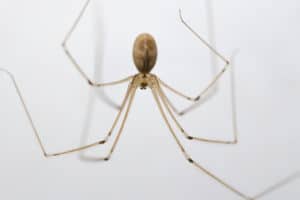
Physical Appearance
The cellar spider, often mistaken for its more infamous relatives, possesses a delicate yet intriguing physical appearance. Its long, slender legs can stretch up to four inches, creating an almost ethereal quality as they gracefully navigate their dimly lit habitats. These spiders exhibit a pale yellowish hue with an unassuming body that allows them to blend seamlessly into the shadows of basements and corners, rendering them nearly invisible during daylight hours. Their unique anatomy is more than just for aesthetics; the long legs enable precise movements, aiding in both capturing prey and escaping potential threats.
Moreover, beyond their fragile facade lies a curious adaptation known as flailing. When threatened or disturbed, cellar spiders will engage in frantic armament—short bursts of rapid leg movement—as if trying to appear larger or confuse adversaries. This behavior adds a layer of complexity to their seemingly passive existence; it highlights how physical form can serve multifunctional purposes in survival dynamics within the ecosystem. Observing these creatures offers insights not only into their biology but also into the intricate balance of life that thrives in hidden spaces, reminding us that beauty often resides in the least expected places.
Habitat
Cellar spiders thrive in dimly lit, undisturbed spaces, making them the perfect inhabitants of basements, attics, and corners of seldom-visited rooms. Their preference for secluded environments not only provides safety from predators but also creates a haven for their prey—small insects drawn to the same shadows. As they construct delicate webs with an architectural finesse that resembles gossamer lace, these spiders play an unassuming yet pivotal role in maintaining ecological balance within human habitats.
Interestingly, the adaptability of cellar spiders extends beyond mere survival; they showcase resilience by exploiting disturbances in their environment. In newly renovated homes or areas undergoing frequent activity, these spiders often reinvent their web structures and find new niches to inhabit. This ability to recalibrate not only highlights their resourcefulness but also invites us to consider how even the most overlooked creatures contribute to vibrant ecosystems right under our roofs. By appreciating the hidden life around us, we can cultivate a sense of wonder for nature's intricate designs that thrive within our everyday surroundings.
Is This Spider Dangerous?
When considering the potential threat posed by cellar spiders, also known as Daddy Longlegs, it’s important to understand their ecological role. These seemingly delicate creatures are efficient hunters of household pests like flies and mosquitoes. Rather than being a menace, they significantly contribute to pest control within our homes. Observing them spin their intricate webs in dim corners can evoke an appreciation for their artistry and adaptability.
However, the misconception that cellar spiders are dangerous often stems from their terrifying appearance and the fact that they might move quickly when disturbed. Despite this, the truth is far less alarming; cellar spiders possess venom that is mainly weak and harmless to humans. Most importantly, they rarely bite unless provoked extensively or handled carelessly. Embracing these eight-legged roommates as beneficial allies rather than threats allows for a healthier perspective on backyard biodiversity and our shared living spaces with nature.
Barn spiders
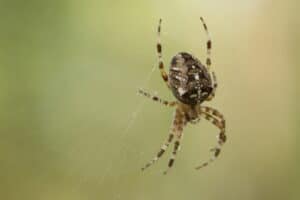
Physical Appearance
Barn spiders, particularly those belonging to the Araneidae family, showcase an astonishing array of physical characteristics that often go unnoticed. Their bodies are typically round and robust, with a velvety texture that can vary in color from earth tones like browns and tans to vibrant shades like orange and yellow. These colors serve not only as camouflage against predators but also reflect their adaptability to diverse environments, blending seamlessly with the rustic hues of barn wood or foliage.
One of the most striking features of barn spiders is their intricate abdominal patterns, which can include stunning geometric designs. This artistry isn’t merely for show; it plays a crucial role in attracting mates while simultaneously serving as a warning signal to potential threats about their venomous bite. Adding to their allure, barn spiders possess long legs adorned with fine hairs that enhance tactile sensitivity and aid in web-building—a skill they master with almost artistic precision by weaving spirals and radial lines that exhibit both functionality and beauty. Observing these creatures up close reveals more than just survival mechanisms; it unveils an entire world where aesthetics meet evolution.
Habitat
Barn spiders thrive in environments that offer both security and abundant hunting opportunities. These common yet fascinating arachnids prefer to build their intricate webs in the nooks and crannies of human structures, particularly barns, sheds, and basements. The combination of dark, undisturbed spaces paired with plentiful insect population makes these locales an ideal habitat for the barn spider. Interestingly, their presence is often a sign of a healthy ecosystem; they act as natural pest controllers by keeping flying insects at bay.
Beyond man-made structures, barn spiders can also be found spinning silk in overgrown fields or gardens where tall grasses provide shelter from predators. This adaptability highlights their resilience and resourcefulness—traits that have allowed them to flourish alongside human development. While some may view these creatures merely as pests, it’s worth noting how they contribute to biodiversity by serving as prey for larger species like birds and other insects. Observing them silently weaving their webs at dusk can transform our perception of beauty within the seemingly mundane spaces we inhabit. Hence, appreciating the barn spider's habitat encourages us to recognize the interconnectedness of all life forms in our backyards and surrounding environments.
Is This Spider Dangerous?
When exploring the world of barn spiders, many people wonder: is this spider dangerous? Barn spiders, particularly the common barn spider (Araneus cavaticus), can elicit fear, but it’s important to separate myth from reality. While their size and occasional presence in large webs might seem intimidating, these arachnids pose very little threat to humans. Their bite is rarely harmful and typically results only in mild irritation akin to a mosquito bite—making them more of an unwelcome houseguest than a lethal predator.
However, there’s an intriguing aspect of their existence that merits attention: their role in controlling pest populations. By preying on insects like flies and moths that proliferate in various environments, barn spiders contribute significantly to natural pest management. Observing these creatures at work can be mesmerizing; watching them spin intricate webs and capture unsuspecting prey highlights how vital they are to maintaining ecological balance. Embracing the idea that barn spiders are not dangerous but rather beneficial could shift our perspective on these misunderstood inhabitant s of our homes and barns.
Identifying Venomous Spiders
In North Texas, several venomous spider species exist, and it's crucial for residents to familiarize themselves with these to ensure safety. The most notorious among them is the black widow spider. Characterized by its glossy black body and the distinctive red hourglass marking on the abdomen, this spider can be easily spotted in dark corners or hidden away in sheds. Another venomous species to watch out for is the brown recluse spider, identifiable by its tan color and a violin-shaped marking on its back. Unlike the intimidating appearance of the black widow, the brown recluse often blends into its surroundings, making observation trickier.
It's essential to recognize that harmless spiders may resemble their venomous counterparts, which can sometimes be found in Texas. For instance, some harmless spiders may exhibit similar body shapes or colors but lack key features such as markings or size variations seen in dangerous species. A good example of this is the common house spider, which often gets mistaken for a brown recluse due to its similar coloration and web structure; however, it lacks the violin shape and distinctive long legs associated with recluses. Observing specific traits—like eye count (recluse spiders have six) and overall body shape—can help distinguish between harmful and safe options.
If you suspect you've encountered a venomous spider, there are certain signs to look for that can confirm your concerns. Look for a swift movement when disturbed; many venomous spiders tend to flee quickly rather than confront perceived threats head-on. Additionally, note any webs: while not definitive proof of danger (as many non-venomous spiders also spin webs), funnel-shaped webs could signal a nearby funnel-web spider—a less common but still potentially harmful resident of North Texas gardens. Being able to correctly identify these characteristics goes a long way toward fostering both awareness and peace of mind in nature-rich areas where encounters are possible.
Black Widow Spider
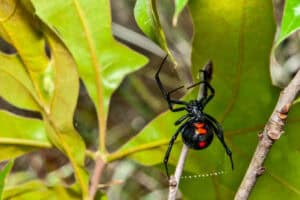
Physical Appearance
The physical appearance of the black widow spider is as striking as it is ominous. Characterized by its glossy, jet-black body, this arachnid’s most notable feature is the vivid red hourglass marking on the underside of its abdomen—a bold warning to potential predators and curious onlookers alike. However, not all black widows showcase this signature color; some may sport orange or even yellow markings depending on their geographic variation. This subtle palette shift serves an evolutionary purpose: while bold colors signal danger, they can also help these clever hunters blend into specific environments, using their dark exoskeletons for stealth in crevices and shadows.
Beyond mere aesthetics, the structure of a black widow's body tells a story of adaptation. Their long legs are slender yet powerful, enabling them to traverse various terrains with ease. When threatened, these spiders often exhibit unique defensive behaviors—curling their bodies or raising their front legs impressively—to deter intruders without even injecting venom. Understanding these nuances of appearance is not just about appreciating beauty in nature; it highlights how form and function intertwine marvelously within the lifecycle of this enigmatic creature. The combination of striking visuals and strategic adaptations makes the black widow spider an enduring subject of fascination among both scientists and casual observers alike.
Habitat
The habitat of the Black Widow spider is as intriguing as its reputation. Preferring secluded, dark environments, these spiders are often found in buildings, under piles of debris, or nestled among rocks and woodpiles. Their architectural preferences reflect a primal survival strategy; the more concealed they are, the less likely potential predators—and curious humans—will disturb them. This affinity for hiding places showcases their adaptability to urban settings while maintaining their natural instincts.
Despite their prevalence near human dwellings, Black Widows play a crucial role in local ecosystems. By keeping pest populations in check—like that of insects that might invade homes or gardens—they inadvertently contribute to a balance that benefits both nature and humanity. Interestingly, their choice of habitat can also indicate environmental shifts; rapid urbanization can displace native wildlife and disrupt existing ecosystems where these enigmatic arachnids thrive. Observing how Black Widows adjust to urban landscapes may provide insights into broader ecological changes and highlight the need for sustainable practices that foster coexistence between man-made environments and wildlife habitats.
Is This Spider Dangerous?
The fear surrounding the black widow spider often stems from its notorious reputation and striking appearance, particularly the glossy black body and the distinctive red hourglass marking on its abdomen. While it's true that their venom is potent, capable of affecting humans significantly if left untreated, it’s essential to understand the broader context of their behavior. Black widows are reclusive creatures that prefer dark, undisturbed spaces—making residential encounters typically rare. When threatened, they would much rather retreat than confront.
Moreover, fatalities from black widow bites are incredibly rare in modern times due to advancements in medical treatment and antivenom development. Many individuals may experience only mild symptoms or allergic reactions that do not require hospitalization. This perspective shifts the conversation toward coexistence rather than eradication; understanding these spiders’ ecological role can help us appreciate them as valuable pest controllers in our gardens and homes. In essence, while a bite should be taken seriously, informing ourselves about these fascinating arachnids can transform our fear into respect for their intricate place within our ecosystem.
Brown Recluse Spider
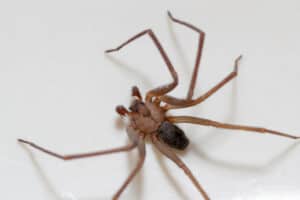
Physical Appearance
The physical appearance of the brown recluse spider is as fascinating as it is unsettling. Typically, this spider measures about 1/4 to 3/4 inches in body length, with a characteristic violin-shaped marking on its cephalothorax that strikes a stark contrast against its light brown hues. This unique coloration serves not just as camouflage against the earthy tones of their surroundings but also creates an intriguing narrative about survival; blending into environments has evolved to help them avoid predators while hunting for unsuspecting prey.
What’s truly captivating is not just their size or color but also their six eyes arranged in pairs—a rarity among spiders. While most spiders boast eight eyes, the brown recluse's unusual arrangement contributes to its mythos and allure, shrouded in both intrigue and fear. It's easy to overlook these remarkable features due to the troubling reputation they wield—often viewed solely as dangerous pests. However, understanding their physical traits invites us into a deeper appreciation for these creatures' roles in our ecosystem; they are nature's hidden architects who contribute significantly by keeping insect populations in check while navigating through our homes largely unnoticed.
Habitat
The habitat of the brown recluse spider is a delicate balance of concealment and climate, making it a master of adaptation. Typically found in the central and southern United States, these spiders prefer undisturbed areas such as attics, basements, and woodpiles, often lurking in spaces that are low traffic for humans. Their affinity for dry environments allows them to thrive in places with minimal moisture fluctuations—think warm corners behind furniture or within cluttered storage areas.
What’s compelling about the brown recluse’s habitat preference is its relationship with human habits. As our homes expand into once-natural territories and we accumulate items that create cozy nooks, we inadvertently provide ideal havens for these elusive arachnids. This intermingling sparks curiosity: as we decorate our living spaces or carry out renovations, how often do we pause to consider who else might be sharing these domains? Understanding their habitat preferences not only fosters a greater respect for their place within our ecosystems but also reminds us of the intricacies underlying even the most discreet interactions between species right under our noses.
Is This Spider Dangerous?
The Brown Recluse Spider often stirs up fear, but understanding its behavior can demystify this creature. While its bite can lead to serious medical concerns, it’s crucial to realize that the spider is reclusive by nature. It prefers undisturbed spaces like attics or closets and will only bite humans in self-defense when accidentally provoked. This means that encounters are quite rare if precautions are taken, such as keeping your living space tidy and minimizing clutter.
Additionally, not every brown recluse bite results in severe reactions; many have been documented as mild or even asymptomatic. Awareness of the symptoms of a genuine bite—such as evolving skin lesions or systemic reactions—can empower individuals to seek timely medical attention while avoiding unnecessary panic about these elusive eight-legged creatures. Moreover, fostering an understanding of local spider species can cultivate a healthier ecosystem appreciation, transforming fear into curiosity and respect for nature's intricate web of life.
North Texas Spider Habitats and Behavior
Understanding the habitats where spiders in North Texas thrive can help homeowners and nature enthusiasts alike identify these creatures more easily. Common locations include gardens, woodpiles, basements, and even your home's corners. Many species favor dark or undisturbed areas, utilizing foliage for concealment during the day. For instance, garden spiders are often found weaving their webs among flowers or shrubs, while the brown recluse prefers secluded spots like inside cardboard boxes or behind furniture.
Behavioral patterns can be indicative of whether a spider poses a threat or is simply keeping to itself, particularly among common spider species. Generally, most spiders prefer to retreat rather than confront humans. Spiders typically only bite when they feel threatened; if approached slowly and cautiously, you may observe them moving away or hiding under leaves or objects. The skittish nature of common house spiders further demonstrates their harmlessness—they tend to scurry away if disturbed rather than stand their ground. Knowing this allows for safer encounters and fosters a respectful view toward these fascinating creatures.
As the seasons change throughout North Texas, so too does spider activity, especially among common spider species. During warmer months—from late spring through early fall—spider populations, including wolf spiders, increase as they emerge for mating and egg-laying periods. You might notice an uptick in sightings around your garden or patio during this time due to the conditions being prime for hunting insects, which make up a significant portion of their diet. Conversely, as temperatures drop in late autumn and winter approaches, many species will either hibernate or seek shelter indoors to escape cold weather—a key time when residents might encounter these eight-legged friends unexpectedly.
Ultimately, understanding spider habits not only helps in identifying them but also contributes to fostering an environment that respects local wildlife without undue fear. By knowing their typical habitats and behaviors as well as seasonal patterns, you're equipped with the knowledge necessary to coexist safely with these incredible insects.
How to Safely Observe Common Spiders
Observing spiders in their natural habitat can be a fascinating and educational experience if approached safely. To ensure both your safety and the well-being of these creatures, it’s essential to maintain a respectful distance. Use your senses rather than rushing in; listen for the sounds of nature—often a spider will let you know it's present through its silk or subtle movement. Having patience is key—settling quietly can yield richer observations as spiders go about their daily routines.
If you're interested in photography or detailed observation, consider using tools like macro lenses for your smartphone or a DSLR camera with an appropriate lens. These allow you to capture images of spiders in your home without needing to get too close. A good pair of binoculars can also enhance your viewing experience from a safe distance, especially for larger species that spin webs high in trees or eaves. Additionally, utilizing field guides with pictures can assist you in identifying various spider species on-site, enhancing both your understanding and appreciation of these fascinating arachnids.
In cases where spiders venture into your home and cause concern—such as hiding in corners or near food preparation areas—removing them carefully is preferable over extermination. It helps to gently coax the spider onto a piece of paper or into a cup using something like a stick as an aid. Once captured, transport the creature outdoors far enough away from your home that it won't return immediately. This method allows spiders to continue fulfilling their ecological roles without causing homeowners unnecessary distress.
Always remember that while some may view all spiders as pests, many play important roles in controlling insect populations around us. When observing them—whether it's admiring the design of webs or watching skilled hunters at work—you have an opportunity to engage with nature respectfully and enrich your local environment's biodiversity through peaceful coexistence.
First Aid for Spider Bites
While it's generally safe to observe the spiders in North Texas from a distance, accidents can happen. If you or someone you know gets bitten by a spider, it's important to act quickly and calmly. For all spider bites, the first step in first aid is to clean the wound gently with soap and water. This helps prevent infection. Next, apply a cool compress to the area to reduce swelling and alleviate pain. Over-the-counter pain relievers can also be used if needed; however, avoid applying any topical medications unless recommended by a healthcare provider.
Most spider bites are harmless and will heal on their own within a few days. However, if you notice more serious symptoms such as persistent redness, swelling that spreads beyond the bite area, severe pain, nausea, or fever, it’s crucial to seek medical attention promptly. These could be signs of an infection or indicate that the bite was from a potentially venomous species like the black widow or brown recluse spider, which are both known to find in Texas. Being aware of local arachnids and their effects can make a world of difference when it comes to your health.
In addition to knowing what steps to take after being bitten, controlling spider populations is equally essential for preventing spider bites. One key measure is keeping living spaces tidy—clutter attracts many types of spiders looking for hiding spots. Ensure that outdoor areas like gardens and patios are clear of debris where spiders may nest. Wearing gloves while gardening or working in attics and basements can also protect against unwanted encounters with these eight-legged creatures.
Additionally, consider wearing long sleeves and pants when venturing into particularly overgrown areas where spiders are likely to be found. Educating family members about what kinds of spiders they might encounter in North Texas will empower them with knowledge on how to coexist safely with these critters while minimizing risks associated with accidental bites.
Educating Children About Common Spiders In Texas
Teaching children about local wildlife, particularly spiders, can have lasting benefits for their understanding of nature and safety. When kids learn to identify the various spider species in North Texas, they develop vital observational skills that will serve them well throughout life. Recognizing the differences between non-venomous and venomous spiders not only empowers them but also reduces unnecessary fears—after all, many spiders play a crucial role in our ecosystem by controlling insect populations.
One engaging way to introduce spider identification is through hands-on activities. Consider organizing a "Spider Scavenger Hunt" where kids look for different types of spiders in your yard or park. Equip them with simple magnifying glasses so they can closely observe webs, colors, and body shapes without getting too close. Take this opportunity to teach them fun facts about each species they encounter—like how the common garden spider spins intricate webs or how jumping spiders are known for their curious behavior. Incorporating games like “Spider Bingo” into learning sessions can make identifying various species even more enjoyable while reinforcing important information.
As you educate children about spiders, instilling respect for these creatures is equally essential. Emphasize that while some spiders do pose risks, most are harmless and contribute positively to our environment. Encourage discussions about myths versus facts—for example, many children may fear brown recluse spiders due to urban legends but don’t realize how rare encounters actually are. By providing accurate information, you help cultivate an appreciation for nature’s diversity while simultaneously fostering a sense of responsibility around human-wildlife interactions.
Finally, consider collaborating with local educational programs or events focused on arachnology and wildlife conservation. Participating in workshops or community outings can reinforce what they've learned at home while exposing them to knowledgeable instructors who can share deeper insights into the world of spiders. Not only will this widen your child’s understanding of local wildlife but also create opportunities for meaningful family bonding as you explore together—all while ensuring that safety awareness remains at the forefront of any adventure into discovering nature's hidden wonders!
Resources for Further Learning
For those eager to deepen their understanding of spiders in North Texas, a wealth of resources about species of spiders can be found. One essential tool is “Texas Spiders: A Field Guide,” authored by Dr. David K. Young and popular for its user-friendly approach to spider identification, featuring detailed photographs and descriptions. Websites like the Texas A&M University Extension offer comprehensive guides on local animals, including sections dedicated to arachnids that touch on habitats, behaviors, and safety tips that can enhance both knowledge and respect for these creatures.
Engaging with your community can also amplify your learning experience. Many local organizations, such as the Texas Master Naturalists, frequently hold workshops focused on regional wildlife awareness—spiders included! These programs provide hands-on learning opportunities about native species' ecology, including huntsman spiders, while fostering a collaborative spirit among nature enthusiasts. Check their calendar for events focusing specifically on arachnology or field trips that explore common spider habitats; these not only educate but also encourage responsible outdoor exploration.
For those who prefer online interactions, numerous forums allow enthusiasts to dive deeper into their hobby. The Arachnoboards forum is an excellent platform where you'll find seasoned experts and novice spider-watchers alike sharing personal experiences and identification tips specific to spiders found in North Texas. Participating in discussions or browsing through identification threads can give you confidence when spotting new specimens in your backyard or neighborhood park.
With so many avenues available—from books and local workshops to bustling online communities—fostering a solid understanding of spiders becomes a fun journey rather than a daunting task. Embrace these resources as constructive tools that not only illuminate the fascinating world of arachnids but also promote safety awareness among residents curious about the incredible biodiversity surrounding us.
Embrace Nature with Knowledge
In our exploration of spiders in North Texas, we’ve learned how to identify both harmless and venomous species. Recognizing the characteristics of common non-venomous spiders can ease fears and help us appreciate their role in our ecosystem. Knowing what to look for when spotting a spider ensures your safety and helps develop a better understanding of these fascinating creatures.
As you venture into nature, remember to respect all forms of wildlife. The more you know about the local spiders, the more confident you'll feel in observing them safely. Explore your surroundings, encourage curiosity in your children, and enjoy the wonders that North Texas has to offer while practicing responsible coexistence with all its inhabitants.

